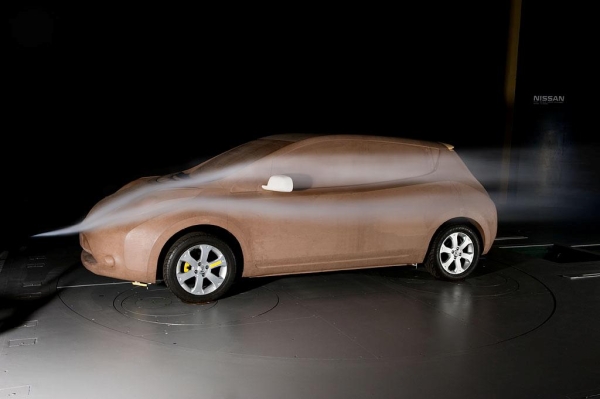To answer the OP's question, I can't put it much more succinctly than morganb did.
morganb wrote:This is a shot in the dark but maybe it just works really well as a system.
As others have pointed out, you can't just add a checklist of aero features to a frame and expect to end up with a class-leading aero frame. These features are interdependent...you can't isolate them.
There's a good example of this in the car world. The Nissan Leaf and the Toyota Prius both have bulbous headlights, and it's not a coincidence. It's to route flow around the side mirrors, which are a major source of drag and wind noise:

Side mirrors are draggy. Bulbous headlights are draggy. But bulbous headlights in exactly the right place bring net drag down substantially.
The Madone is (a) designed as a system and (b) takes advantage of lots of small optimizations like minimizing exposed cables. To KGT's point, many bikes are in the same league, and we don't have a large body of rigorous tests that all show the Madone having much lower drag than its peers. We do have a number of reasonable tests put it solidly among the top bikes--and often at the top. They all use different methodologies, wind speeds and differently-weighted angles of attack. The fact that they tend to converge on similar answers suggests that the Madone and Cervelo's S5 are two of the fastest bikes on the market.
Hey, look! We just performed
a meta-analysis.
Science, bitches! 
Regarding the diverging Cervelo and Trek approaches: 20 years ago, aero wheels were as narrow as possible and had sharp-tailed airfoils. Now, the fastest spoked wheels are broad and blunt. But the fastest of the old-style pointy wheels (like the Specialized/Hed Trispoke) are still pretty good*. And the very fastest (disc wheels) are still the fastest today. It's clearly possible to make a fast bike with either approach.
Trek's Kamm-tail shapes are more aero than I expected when I first saw them, and they're unquestionably more structurally efficient than narrow, NACA airfoil-like shapes Cervelo used on its first-generation S3. One reason some people consider the Madone "the aero king" as you put it" is that it's a first-tier aero frame that demands no compromises on either torsional stiffness or especially on comfort (due to the IsoSpeed decoupler).
One thing to remember is that we (as consumers) don't care which bike is fastest because
none of the top aero bikes is the fastest. The fastest bike depends on which day it is and what the conditions are on that day. Most of us can only afford one high-end aero bike (if that). So we will pick one of the fastest bikes, and it will be the fastest on some days. We just hope that the one we choose will be fastest on most days. It's a gamble.
I've said this before, but I'm putting my money on the Madone to be fastest on most of the days I race. I'm waiting for disc brakes and any changes Trek will make since the UCI dropped its 3:1 aspect ratio rule. But even though I work in a related field, there is no One True Aero Bike for me. Like a number of other posters here, I understand everything manufacturers say in their white papers. I agree with some claims/experiments and disagree with others, and I've even done a few little CFD studies for myself to figure out what might really matter. But when I hand my credit card to the LBS, I'm gambling too. There is no definitive study and there is no clear right answer here.
-------------
* I think it's fascinating that the Trispoke didn't use a NACA airfoil cross-section. NACA airfoils don't show up much on fast modern wheels, either.








